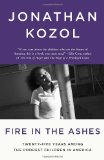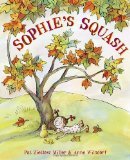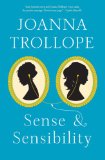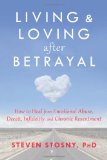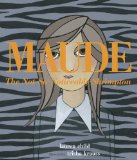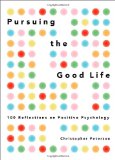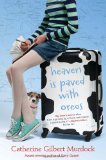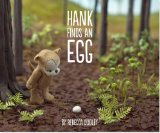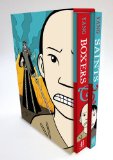 What the Heart Knows
What the Heart Knows
Chants, Charms & Blessings
by Joyce Sidman
illustrations by Pamela Zagarenski
Houghton Mifflin Books for Children, 2013. 65 pages.
Starred Review
What the Heart Knows is a book of poems by an illustrious poet, who has already won Newbery Honor, and with illustrations by a distinguished artist, who has already won Caldecott Honor.
My library has this book categorized as for young adults, but the poems can be enjoyed by old adults as well. Indeed, what makes it most a book of poetry for children is that a children’s book writer and a children’s book illustrator created it. Most of the poems are universal, and the dreamy, surreal pictures can be appreciated by anyone.
The four sections of the book are “Chants & Charms – to bolster courage and guard against evil,” “Spells & Invocations – to cause something to happen,” “Laments & Remembrances – to remember, regret, or grieve,” and “Praise Songs & Blessings – to celebrate, thank, or express love.” A “Note to the Reader” at the front of the book explains why this theme was chosen:
We speak to send messages to the world. We chant for what we want, bless what we like, lament what we’ve lost. When angry, we curse; when in love, we sing.
We have always done this. Since earliest human history, we have used language to try to influence the world around us….
We may no longer believe that words can make crops grow, prevent illness, or keep rivers from flooding. But we still believe in the power of the words themselves. Why else would we pray, sing, or write? Finding phrases to match the emotion inside us still brings an explosive, soaring joy.
I wrote these poems for comfort, for understanding, for hope: to remind myself of things I keep learning and forgetting and learning again. They’re about repairing friendship, slowing down time, understanding happiness, facing the worst kind of loss. They are words to speak in the face of loneliness, fear, delight, or confusion.
I hope they work for you. I hope you’re inspired to write some of your own – and chant them, in your own voice.
This book is full of images for abstract things. “Come Happiness” sees happiness as a raindrop or a heartbeat or a breeze. “Time Spells” suggests that time you want to slow down “stretch like a sleepy dog, slow and languid and warm with flickering light.”
I like “Chant Against the Dark,” though I wouldn’t want to suggest it to a very young child. This stanza, for example, might give them ideas, making things worse:
Don’t come close, dark.
Don’t breathe on me.
When the lamp clicks off,
don’t creak and shift
like some wild-eyed horse
waiting for its rider.
But for an older reader? Beautiful!
Some others I love are “Chant to Repair a Friendship”:
Come, friend, forgive the past;
I was wrong and I am grieving.
,
“Sleep Charm”:
One by one, those cares will drop
from you like stones
into deep water.
Slip from your dayskin
and swim, shimmering,
into the dream beyond the dream.
,
“How to Find a Poem”:
Wake with a dream-filled head
,
“Invitation to Lost Things”:
Come out, come out
from your hidden places,
hair clips, homework, phones.
,
“Blessing on the Smell of Dog”:
May his scent seep through
perfumed shampoos
like the rich tang of mud in spring.”
,
“Teacher”:
I loved how I hated numbers, had always
hated them, would continue to hate them
until I saw them sprout from your hands.
,
“Silly Love Song”
If you are the Maserati,
then I am the oil change.
,
and “I Find Peace”:
I find peace in the lazy doze of Saturdays
and in the beat of a pounding run.
The ones most perfect for teens are “Lament for Teddy”:
Where is the one
whose mute love followed me
all the days of my life?
The one I boxed up and packed away?
The one I thought I didn’t need?
The one I felt / I had outgrown?
,
“Where Is My Body?”:
Where is my body?
The one I’m used to,
slim and ordinary as a twig?…
Where is the body
that housed an
Olympic gymnast,
sumo wrestler,
pirate,
dancer;
all waiting, poised
in endless possibility?
When did I grow
awkward, lumpish,
a stranger in my own skin —
each day revealing
some fresh freakishness?
,
and “Lament for My Old Life”
I hated to leave that house,
fought it tooth and nail.
.
Here is poetry that will make you think and will help you look at the world differently. Perhaps it will motivate you to put your wishes into words.
joycesidman.com
sacredbee.com
hmhbooks.com
Buy from Amazon.com
Find this review on Sonderbooks at: www.sonderbooks.com/Childrens_Nonfiction/what_the_heart_knows.html
Disclosure: I am an Amazon Affiliate, and will earn a small percentage if you order a book on Amazon after clicking through from my site.
Source: This review is based on a library book from Fairfax County Public Library.
Disclaimer: I am a professional librarian, but I maintain my website and blogs on my own time. The views expressed are solely my own, and in no way represent the official views of my employer or of any committee or group of which I am part.
